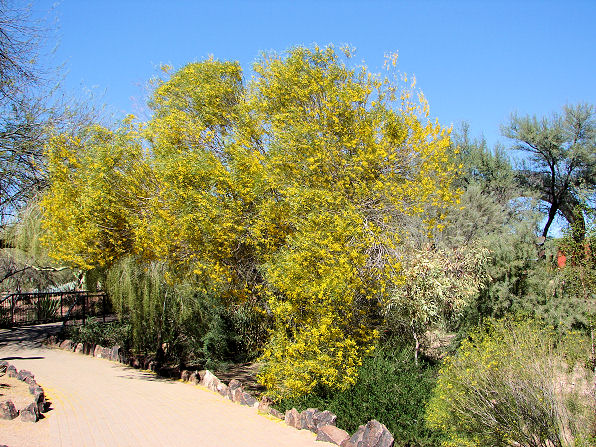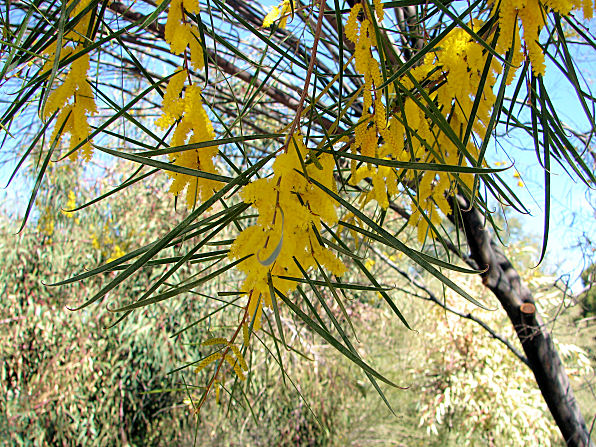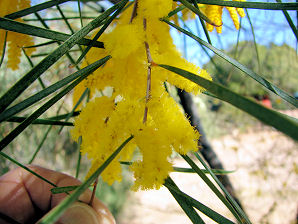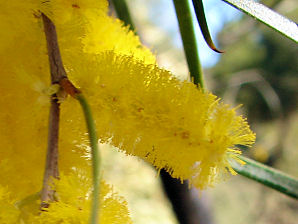Xeriscape Landscaping Plants For The Arizona Desert Environment.
Pictures, Photos, Information, Descriptions,
Images, & Reviews.
Trees.
Acacia Trees, Acacia microneura.
We Are Proud Of Our SafeSurf Rating!
Click On Any Of The Following Links By Amazon.Com
For Books, & Videos About Wildflowers Of Arizona & The Southwest USA. No Obligation!
 |
| Acacia, Acacia microneura. Desert Botanical Garden of Phoenix Arizona. Photo March 3, 2008. |
|---|
 |
| Acacia, Acacia microneura. Desert Botanical Garden of Phoenix Arizona. Photo February 27, 2008. |
 |  |
| Acacia. Acacia microneura. | Acacia. Acacia microneura. |
|---|
Acacia Tree.
We wish to thank Wikipedia, the free encyclopedia for some of the information on this page. We share images and information with Wikipedia. Slender shrub - like tree with young, resinous, angled, branches. Slended whip like leaves and yellow flowers. A xeriscape ornamental in lower elevations of Arizona. However it is rarely found in the Phoenix and Tucson areas.
Quick Notes:
Height: Up To 25 feet tall, 10 - 14 feet spread.
Flowers: Golden yellow rod - shaped and puffy, 1 inch long; 1/8 - 1/4 inch diameter, bloom in spring.
Blooming Time: February - March.
Seed Pod: Seedpods, flat oblong, reddish or brown, 1 1/2 inch long.
Leaves: Long, linear, to 3 inches long, silver gray in color.
Stems/Trunks: A redish-brown, finely furrowed bark. 3 to 14 inches in diameter.
Found: Introduced from Cranbrook, south-western, Western Australia, at 846 feet elevation.
Elevation: 0 to 4,000 feet.
Hardiness:
Soil pH requirements:
Sun Exposure:
Habitat: Sandy well drained desert soils.
Miscellaneous: Flowering Photos Taken February 27, 2008 in Desert Botanical Garden of Phoenix, Arizona.
|
We Are Proud Of Our SafeSurf Rating!
Click On Any Of The Following Links By Amazon.Com
For Books, & Videos About Wildflowers Of Arizona & The Southwest USA. No Obligation!
| © 1966 - Present, Audrey, Eve, & George DeLange |
